[vc_row][vc_column][vc_column_text]A thriving cosmopolitan city with the soul of an Alpine village and the heart of an artist Lucerne curves around the crystalline waters of its stunning lake. Romantic, creative and cultured Lucerne is Switzerland’s hidden pearl.
The once sleepy village of Lucerne has transformed itself into a cosmopolitan playground with some truly awe-inspiring mountain scenery. This lakeside beauty is just an hour from Zurich and one and a half from Bern making it perfect for long weekends that could easily extend to weeks. As Switzerland’s latest hot-spot, Lucerne is peppered with a selection of haute-design hotels and spas, excellent cuisine and a rich culture making it a charming and relaxed counterpart to Zurich’s urban buzz and Bern’s historic hush.
Lucerne’s appeal stems from the postcard views across the crystalline waters of the lake. Bankside pathways make for romantic strolling with the Alps watching from beyond the spires and rooftops of the old town. Antique steam-powered paddleboats crisscross the lake and if you allow yourself a moment you can be transported back to a time where life was lived at a slower pace. The 15-minute walk up the quaint cobbled streets to the top of the medieval old town is rewarded with stunning views across the city and lake. Three towers adorn the city walls with the Zyt Tower containing the city’s ancient clock held up by two painted giants. As is fitting for the town’s main clock it chimes exactly one minute before any other giving you just enough time to adjust your Swiss-made watch.
[/vc_column_text][/vc_column][/vc_row][vc_row][vc_column][vc_column_text]
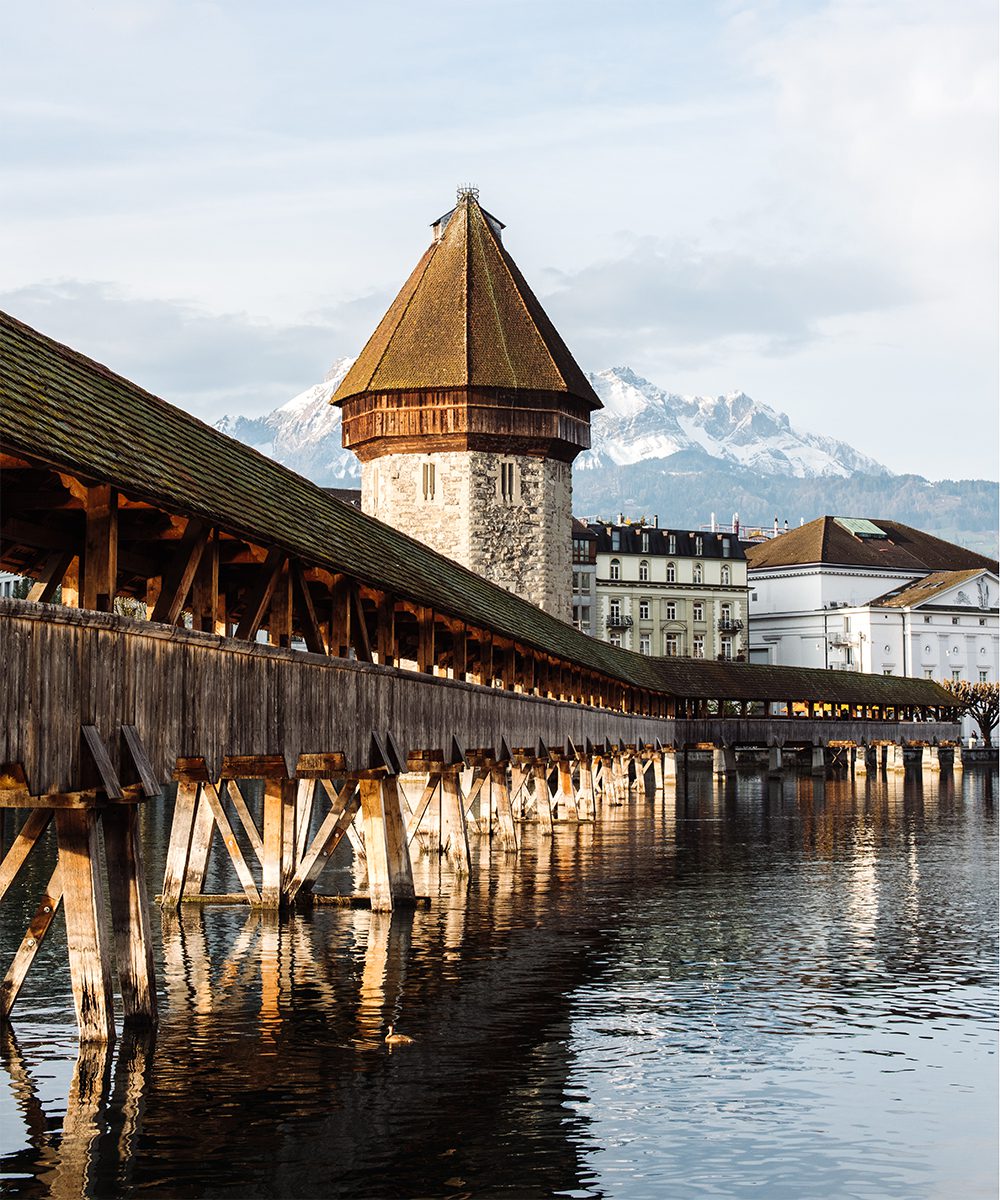
The medieval Kapellbrücke (Chaple Bridge)

The Spreuerbrücke Bridge
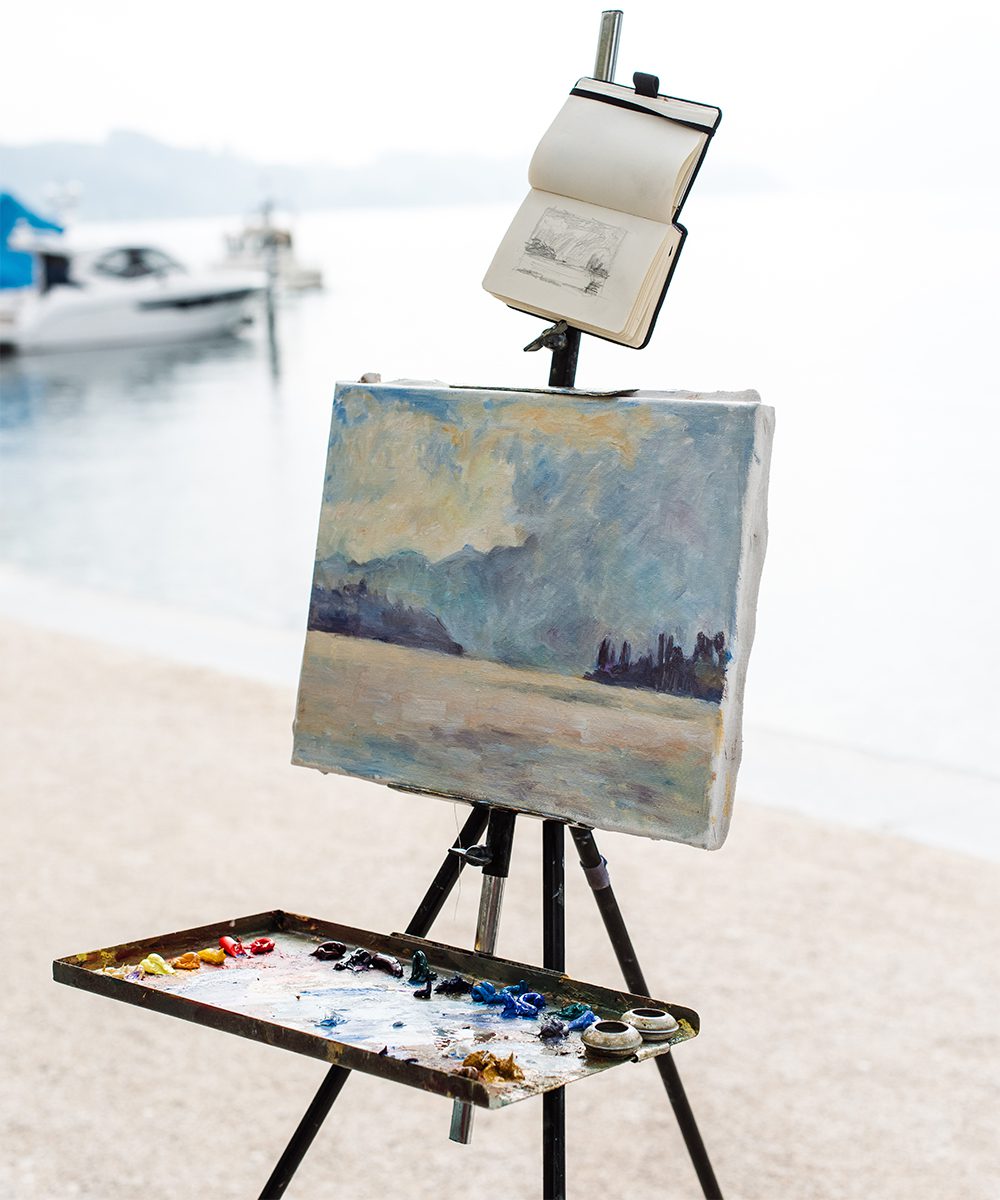
A local artist captures the colours of Lake Lucerne

Café life in Lucerne
[/vc_column_text][/vc_column][/vc_row][vc_row][vc_column][vc_column_text]Frescoes abound across buildings throughout the city the finest of which adorns the PfisternGuildhouse where solid local fare is served in a traditional wood-panelled restaurant. Further medieval artistry can be seen in the magnificent 200-metre 14th-century wooden footbridge of Kapellbrücke (Chapel Bridge). While the paintings inside the Chapel Bridge portray tidbits from Lucerne’s history the less visited Spreuerbrücke Bridge is just as beautiful although a little darker in content. The 17th-century paintings depict a traditional medieval danse macabre, an allegorical contemplation on the inevitability of death. Despite the rather ghoulish theme the bridge is a delight and should not be missed.
A few minutes north of the old town lays Lucerne’s most poignant landmark. The haunting Lion of Lucerne has a suitably tragic and grief-stricken story behind it. While on leave in Lucerne in 1792 an officer of the Swiss Guard received news that over six hundred of his comrades had fallen victim to revolutionary forces in Paris. Years later he was moved to commission this memorial as a tribute to their loss, its quiet dignity an inspiration to artists as diverse as Victorian polymath Thomas Carlyle and US punk icon Patti Smith attest to its lasting power.[/vc_column_text][/vc_column][/vc_row][vc_row][vc_column][vc_column_text]

Sharq Oriental terrace
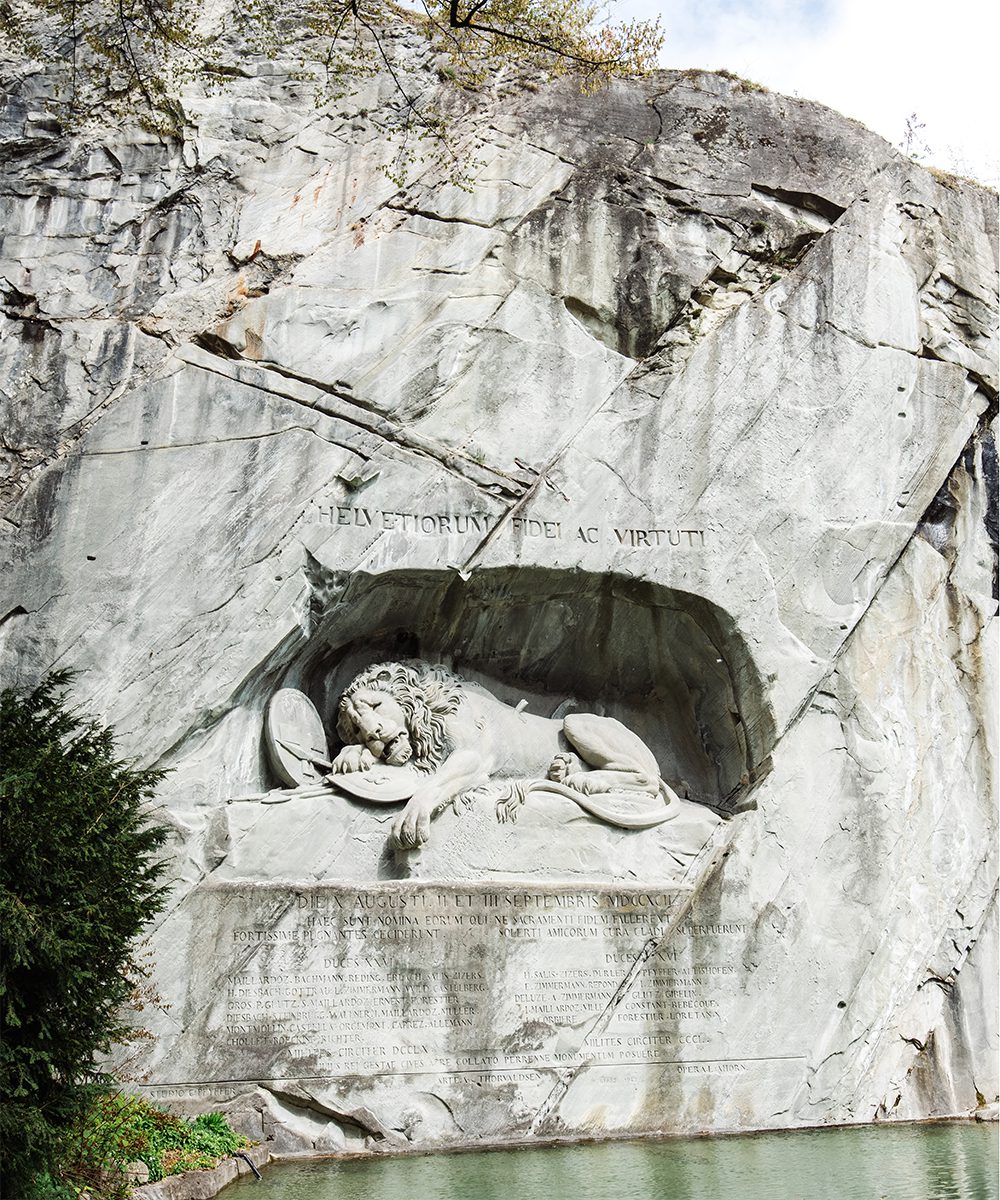
The haunting Lion of Lucerne monument

The Church of St. Leodegar

The Bürgenstock pier

View of the Lake Lucerne
[/vc_column_text][/vc_column][/vc_row][vc_row][vc_column][vc_column_text]The peak of Mount Pilatus looms above the city and can’t be forgotten but before embarking on its heady heights it will pay to nourish the body. Lucerne has become a magnet for culinary innovators in recent years. One of the more notable talents is Johan Breedijk who heads up La Scala located within the art deco beauty of the Hotel Montana. This 15-point Gault & Millau fine dining restaurant has a menu that changes daily and features the best of local produce. If you find yourself there in the right season do not miss the white asparagus with potato, egg and Parma ham. The hotel itself is divine; its art deco exterior complemented with a warm contemporary interior. If you’re after something a little more traditional head to StiefelsHopfenKrantz for modern takes on Swiss classics or the more refined menu at the renowned Brasserie Boduoverlooking the river, where a booking is essential.
Slightly away from the main town lies the series of four Bürgenstock Hotels and Resorts, with the main five-star hotel and alpine spa sitting right above the lake. Rooms have an up-to-the-minute contemporary style but the views are timeless, with a choice of lake or mountain vistas and some suites featuring bathtubs-with-a-view heated by an open fire, which is the perfect accompaniment to the hotel’s wellness facilities.[/vc_column_text][/vc_column][/vc_row][vc_row][vc_column][vc_column_text]
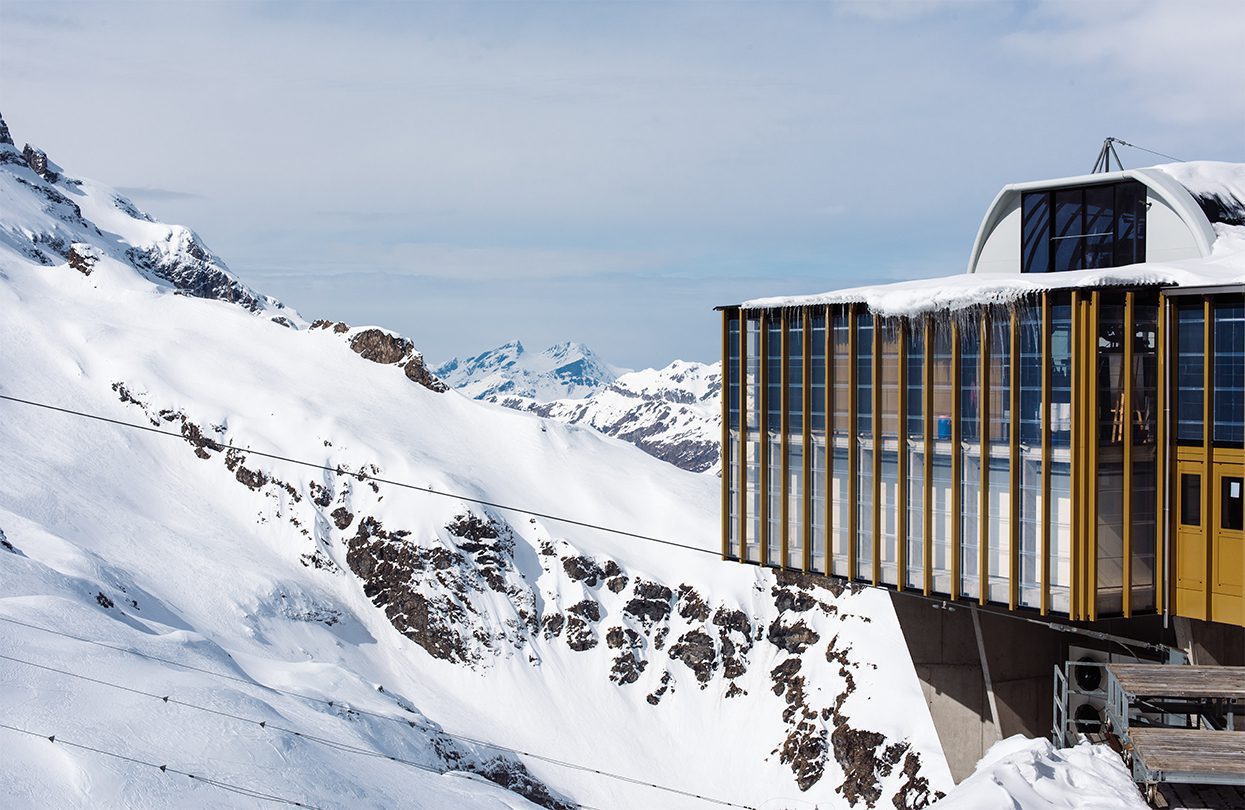
The Mount Titlis cable car station
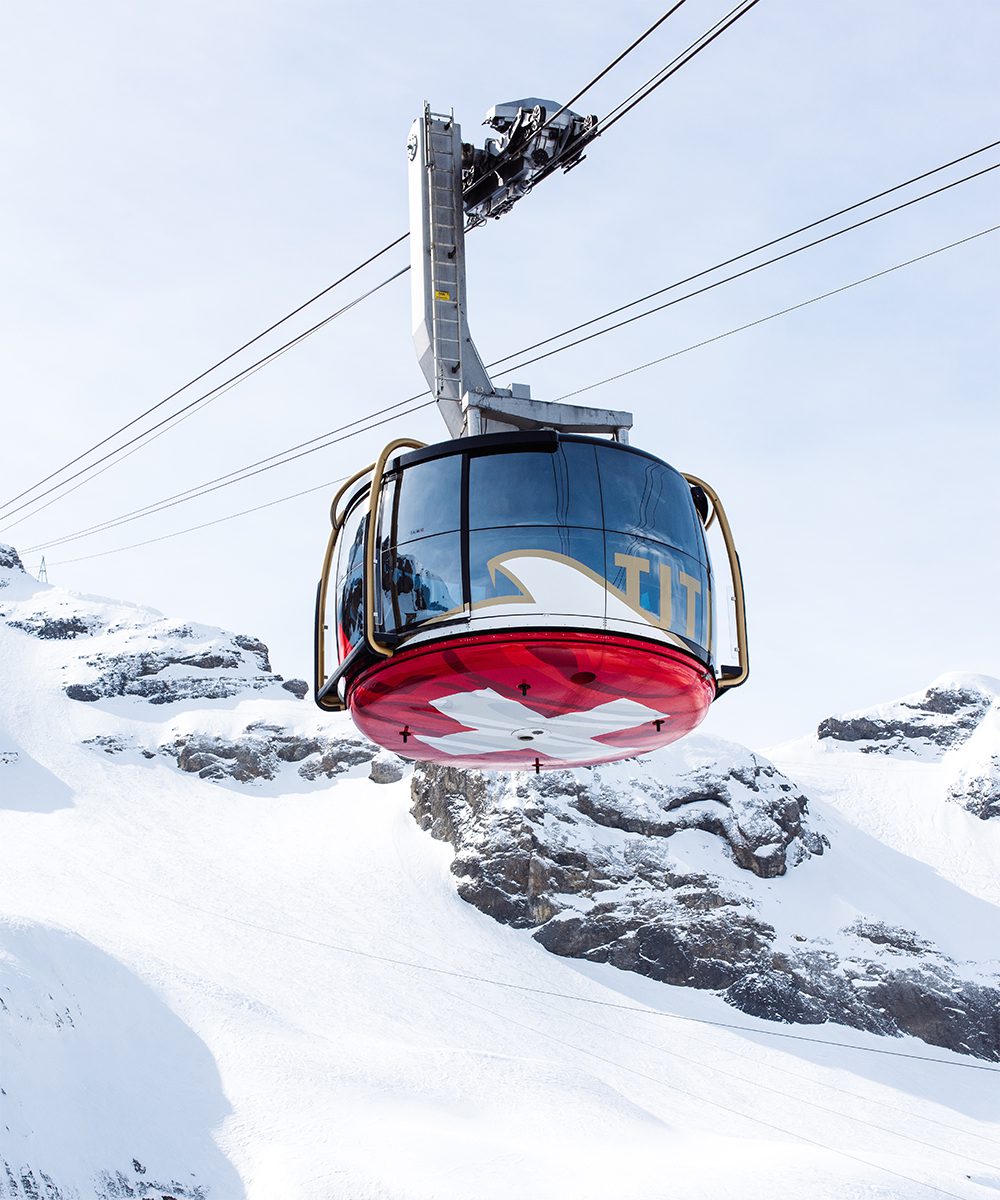
The rotating cable car to the top of Mount Titlis
[/vc_column_text][/vc_column][/vc_row][vc_row][vc_column][vc_column_text]The three Bürgenstock spas provide a variety of steam baths, saunas and an abundance of signature treatments. It’s entirely possible to spend your whole time in Lucerne working through the treatment menus. Of the seven excellent eateries in the complex, the Sharq Oriental serves an exquisitely executed Middle Eastern menu and the shisha terrace is something really different. Alternatively, after chancing your luck at the gaming tables at the opulent Grand Casino, you can find reprieve in the refined ambience and gourmet cuisine of its Michelin-starred restaurant Olivo, or celebrate your winnings on the dance floor of the Casineum.
At more than two kilometres high, Mount Pilatus goes by the Tolkien-like nickname Dragon Mountain and dominates the landscape. During the summer season, it can be explored in stylish opulence, with the Golden Tour following in the footsteps of historical figures such as Queen Victoria and President Theodore Roosevelt. Pootle across the lake on a vintage paddle steamer then disembark to climb aboard one of the world’s steepest cogwheel railways, which will glide you effortlessly to the summit. Several excellent restaurants at the top offer seasonal delicacies to nibble on while taking in the stunning views.
Day trips from Lucerne are recommended if you are able to drag yourself away. An aerial cable car goes to the top of nearby Mount Titlis where a wander through the magical caves and grottos of the Engelberg Glacier and the summer flower trails provide the ultimate alpine experience. Mount Rigi is often called the Queen of the Mountains. An easy day-trip to this majestic monolith allows you views acrossLake Lucerne, Lake Laurezand Lake Zug with the vistas sweeping over the jagged snow-capped Alps all the way to Germany’s Black Forest.[/vc_column_text][/vc_column][/vc_row][vc_row][vc_column][vc_column_text]

Architectural excellence at the Bürgenstock Hotels and Resorts

Salon 1903 at the Bürgenstock Hotels and Resorts

The taste of The Middle East at Sharq Oriental
[/vc_column_text][/vc_column][/vc_row][vc_row][vc_column][vc_column_text]Back in Lucerne town centre head up to Château Gütsch where high-tea is served with an array of Swiss pasties fit for a fairy-tale queen and include views across the stunning ensemble of town, lake, and mountains. To walk off the inevitable post-pastry regret take a stroll around the Château’s incredible world-class sculpture park. The collection of outdoor sculptures is the love-child of the hotel’s owners and includes works by Russia’s most celebrated artists such as VasilyKlyukin, Michael Tsaturyan and Margo Trushina.
It’s no mystery why Lucerne’s restful, meditative atmosphere has long drawn philosophers, poets and artists plus a fair share of US presidents and astronauts. One of its more famous visitors was the great German composer Richard Wagner who actually lived here for six years to escape scandal in his native country. His fifteenth-century house at Tribschenjust outside of town is now a mecca for devotees the world over and a focal point for the Lucerne Festival.
Launched in 1938 as a haven for conductors and musicians escaping the turmoil engulfing the rest of Europe, the Lucerne Festival remains one of the world’s foremost showcases for the finest in classical music performance. Beginning around mid-August, its month-long summer festival is the centrepiece and with another at Easter plus a weeklong piano festival in the autumn, there is ample opportunity to experience first-rate classical music in this magical setting. The Culture and Congress Centre (KKL) is now its main venue, designed by Pritzker Prize-winning architect Jean Nouvel and perfectly situated on the shores of the lake.
This year’s season looks set to enchant audiences with a plethora of world-class orchestras such as the Berlin Philharmonic, Royal Concertgebouw and Barenboim’s fascinating West-Eastern Divan, with world-class performers such as Cecilia Bartoli, Maurizio Pollini and Evgeny Kissin among a whole host of others. The theme is ‘Power’, so expect music to match the surrounding mountain-scape, and there is an on-going programme specifically geared towards introducing younger listeners to the classical genre.
A five-minute walk from the KKL stands the Rosengart Collection, a much-loved treasure trove of modernist art presented in a stately former bank building. Founder and owner Angela Rosengart came of age in the company of some of the biggest names in 20th-century art, even holidaying with Picasso in the south of France who she also modelled for on several occasions, thus giving a very personal flavour to the collection. With a smattering of Impressionist wonders, the galleries feature many works by Swiss artist Paul Klee and Picasso himself.
A romantic starlit stroll to any one of Lucerne’s vantage points will instantly show why its name comes from the Latin for ‘lantern’, the city’s glittering lights exude a sumptuous aura enamoured by artists across centuries and cultures. The medieval streets of the old town ring with an ancient melody while the thoroughly modern inhabitants create a vibrant and dynamic city. The French writer, Alexandre Dumas described Lucerne as “a pearl in the middle of the world’s most beautiful oyster” an apt description. Indeed, Lucerne is both pearl and oyster waiting to be relished and enjoyed. ◼[/vc_column_text][vc_column_text]Subscribe to the latest edition now by clicking here.
© This article was first published in June-July 2019 edition of World Travel Magazine.[/vc_column_text][/vc_column][/vc_row]



